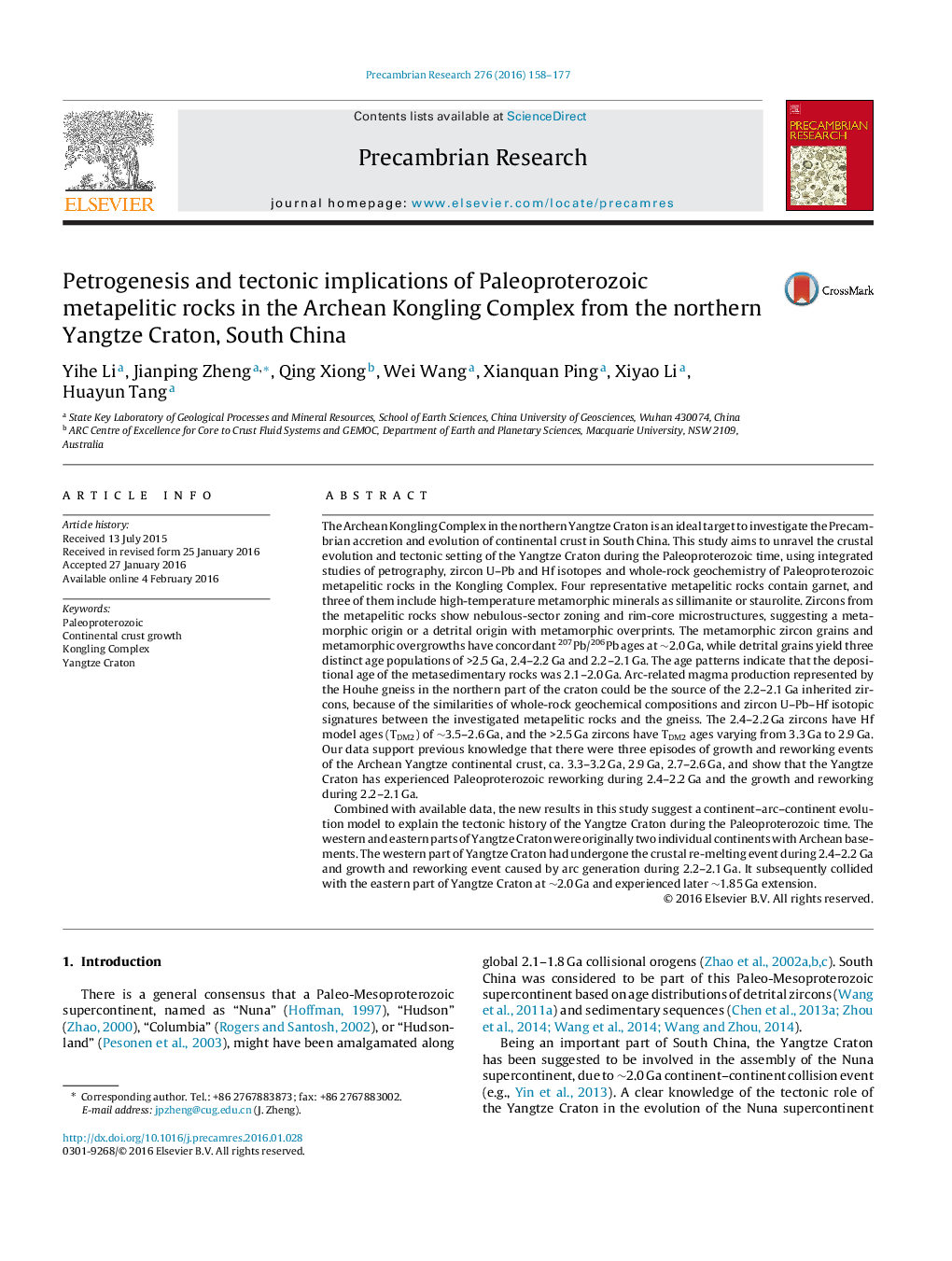| کد مقاله | کد نشریه | سال انتشار | مقاله انگلیسی | نسخه تمام متن |
|---|---|---|---|---|
| 4722404 | 1639599 | 2016 | 20 صفحه PDF | دانلود رایگان |
• Provide 2.2–2.1 Ga depositional age of the Kongling metapelitic rocks.
• Improve the multi-stage crustal accretion and reworking events of the Yangtze Craton.
• Consider a continent–arc–continent model for the Yangtze Craton during Paleoproterozoic.
The Archean Kongling Complex in the northern Yangtze Craton is an ideal target to investigate the Precambrian accretion and evolution of continental crust in South China. This study aims to unravel the crustal evolution and tectonic setting of the Yangtze Craton during the Paleoproterozoic time, using integrated studies of petrography, zircon U–Pb and Hf isotopes and whole-rock geochemistry of Paleoproterozoic metapelitic rocks in the Kongling Complex. Four representative metapelitic rocks contain garnet, and three of them include high-temperature metamorphic minerals as sillimanite or staurolite. Zircons from the metapelitic rocks show nebulous-sector zoning and rim-core microstructures, suggesting a metamorphic origin or a detrital origin with metamorphic overprints. The metamorphic zircon grains and metamorphic overgrowths have concordant 207Pb/206Pb ages at ∼2.0 Ga, while detrital grains yield three distinct age populations of >2.5 Ga, 2.4–2.2 Ga and 2.2–2.1 Ga. The age patterns indicate that the depositional age of the metasedimentary rocks was 2.1–2.0 Ga. Arc-related magma production represented by the Houhe gneiss in the northern part of the craton could be the source of the 2.2–2.1 Ga inherited zircons, because of the similarities of whole-rock geochemical compositions and zircon U–Pb–Hf isotopic signatures between the investigated metapelitic rocks and the gneiss. The 2.4–2.2 Ga zircons have Hf model ages (TDM2) of ∼3.5–2.6 Ga, and the >2.5 Ga zircons have TDM2 ages varying from 3.3 Ga to 2.9 Ga. Our data support previous knowledge that there were three episodes of growth and reworking events of the Archean Yangtze continental crust, ca. 3.3–3.2 Ga, 2.9 Ga, 2.7–2.6 Ga, and show that the Yangtze Craton has experienced Paleoproterozoic reworking during 2.4–2.2 Ga and the growth and reworking during 2.2–2.1 Ga.Combined with available data, the new results in this study suggest a continent–arc–continent evolution model to explain the tectonic history of the Yangtze Craton during the Paleoproterozoic time. The western and eastern parts of Yangtze Craton were originally two individual continents with Archean basements. The western part of Yangtze Craton had undergone the crustal re-melting event during 2.4–2.2 Ga and growth and reworking event caused by arc generation during 2.2–2.1 Ga. It subsequently collided with the eastern part of Yangtze Craton at ∼2.0 Ga and experienced later ∼1.85 Ga extension.
Journal: Precambrian Research - Volume 276, May 2016, Pages 158–177
